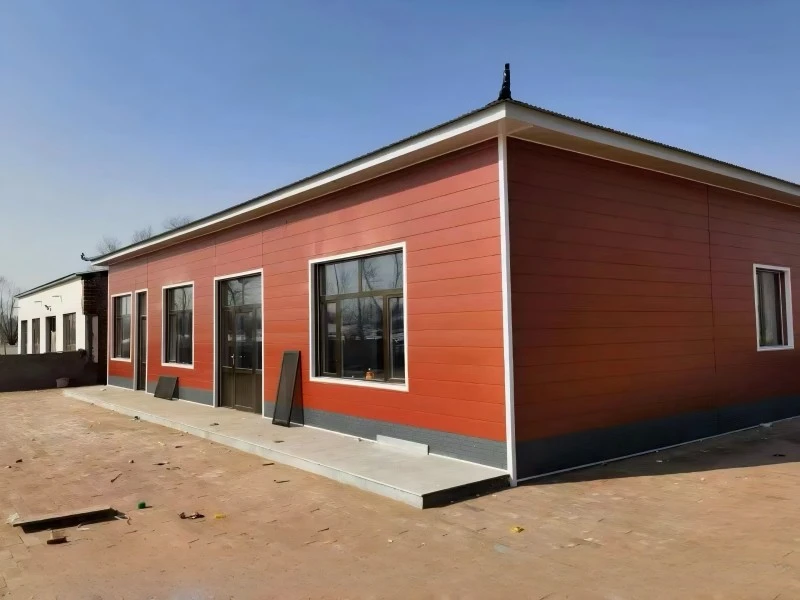Factors Influencing Mold Growth in Foldable Container Houses
Moisture Control and Ventilation
Moisture is the primary culprit behind mold growth in any structure, including foldable container houses. These innovative living spaces are designed with moisture control in mind, but certain factors can still contribute to excess humidity:
- Inadequate ventilation
- Poor insulation leading to condensation
- Water leaks from plumbing or roof
- High humidity environments
To combat these issues, foldable container houses often incorporate advanced ventilation systems. These systems promote air circulation, reducing the likelihood of moisture accumulation. Additionally, high-quality insulation materials like fiberglass, rock wool, or polyurethane foam are used to prevent condensation on interior surfaces.
Material Selection and Treatment
The materials used in constructing foldable container houses play a crucial role in mold prevention. Reputable manufacturers like Shandong Building Materials utilize materials that are inherently mold-resistant or treated to resist mold growth:
- Steel frames treated with anti-corrosive coatings
- Mold-resistant paint on interior surfaces
- Moisture-resistant flooring materials
- Properly sealed windows and doors to prevent water ingress
These material choices contribute to the overall durability and mold resistance of foldable container houses, which can have a lifespan of up to 70 years when properly maintained.
Climate Considerations
The climate in which a foldable container house is placed can significantly impact its susceptibility to mold growth. In humid or rainy climates, additional precautions may be necessary:
- Enhanced drainage systems around the structure
- Elevated foundations to prevent ground moisture absorption
- Additional weatherproofing measures
- Installation of dehumidifiers in extremely humid environments
Manufacturers like Weifang Sandong Building Materials Co., Ltd. offer customization options to address specific climate challenges, ensuring that foldable container houses can be adapted for use in various environments, from camps and schools to mining sites.
Preventive Measures and Maintenance
Regular Inspections and Cleaning
To maintain a mold-free environment in a foldable container house, regular inspections and cleaning are essential. Occupants should:
- Conduct monthly visual inspections for signs of moisture or mold
- Clean and dry any damp areas immediately
- Regularly clean and maintain ventilation systems
- Check seals around windows and doors for deterioration
These proactive measures can prevent small issues from escalating into significant mold problems, preserving the integrity and healthiness of the living space.
Moisture Management Strategies
Effective moisture management is key to preventing mold growth in foldable container houses. Strategies include:
- Using exhaust fans in bathrooms and kitchens
- Maintaining indoor humidity levels below 60%
- Promptly repairing any leaks or water damage
- Proper landscaping to direct water away from the structure
These strategies, combined with the energy-saving features and fast assembly characteristics of modern foldable container houses, contribute to a comfortable and healthy living environment.
Professional Maintenance and Upgrades
While regular occupant maintenance is crucial, periodic professional inspections and upgrades can further enhance mold resistance:
- Annual professional inspections of the structure and systems
- Upgrading insulation or ventilation systems as needed
- Applying new mold-resistant coatings or treatments
- Addressing any structural issues that could lead to water ingress
Professional maintenance ensures that the foldable container house continues to meet standards such as ISO, CE, AS, US, and CA, maintaining its quality and safety over its long lifespan.
Innovative Design Solutions
Advanced Insulation Technologies
Modern foldable container houses leverage advanced insulation technologies to combat mold growth:
- Vacuum insulated panels for superior thermal performance
- Phase change materials for temperature regulation
- Aerogel insulation for extreme environments
- Smart insulation systems that adapt to environmental conditions
These innovative solutions not only prevent mold growth but also enhance the energy efficiency of the structure, aligning with the energy-saving features promoted by manufacturers like Shandong Building Materials.
Smart Home Integration
The integration of smart home technologies in foldable container houses can significantly aid in mold prevention:
- IoT-enabled humidity sensors for real-time monitoring
- Automated ventilation systems that respond to humidity levels
- Smart HVAC systems for optimal temperature and humidity control
- Mobile apps for remote monitoring and control of home environment
These technologies allow for proactive management of the living environment, reducing the risk of mold growth while enhancing overall comfort and efficiency.
Modular and Adaptable Designs
The modular nature of foldable container houses allows for innovative design solutions that combat mold growth:
- Easily replaceable wall panels for quick remediation if mold occurs
- Modular bathroom and kitchen units with enhanced moisture resistance
- Adaptable ventilation systems that can be upgraded or modified
- Customizable layouts that optimize airflow and reduce moisture traps
These design features, combined with the structural integrity ensured by 3D modeling and planning, make foldable container houses a versatile and mold-resistant housing solution for various applications, from temporary camps to permanent dwellings.
Conclusion
While mold growth is a potential concern in any living space, foldable container houses, when properly designed, constructed, and maintained, can effectively resist mold development. The combination of advanced materials, innovative design features, and proactive maintenance strategies makes these structures a viable and healthy housing option. As the industry continues to evolve, companies like Weifang Sandong Building Materials Co., Ltd. are at the forefront, developing solutions that enhance the durability, comfort, and health aspects of foldable container houses.
For more information on mold-resistant foldable container houses and other exterior cladding and facade solutions, please contact us at info@sdqsc.com. Our team is dedicated to providing high-quality, innovative housing solutions that meet the diverse needs of our global clientele.